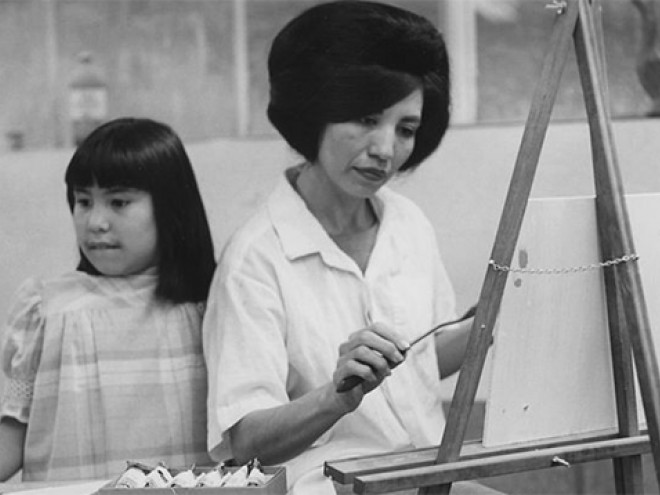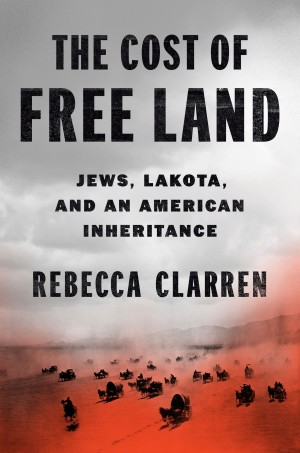Jewish-American author Kathryn Lasky pairs with the Navajo artist Johnson Yazzie to tell a lesser-known story of Jewish immigrants in the American Southwest and the Native American communities that became their neighbors. Lasky narrates the story of Yossel, a Jewish boy escaping Tsarist Russia with his family and finding a haven in New Mexico, where they have inherited a trading post. While trying to acclimate himself there and still holding on to memories of the past, Yossel meets Thomas, a Navajo boy whose family has called the region their home for generations. Through poetic text and colorful portraits of late nineteenth-century life among intersecting cultures, Lasky and Yazzie create a believable story of boyhood friendship and deeply rooted traditions.
The Jews in this story are not city dwellers. Forced to abandon their Russian shtetl, Yossel and his parents bypass the urban areas where most Jewish immigrants settled, instead establishing themselves in the desert, close to a Navajo Reservation. As a child, Yossel is unaware of all the political and historical implications of his new neighbors’ past, but he knows that he feels unsettled and lonely. The paradox of many immigrants’ lives is that, even when their old home was fraught with danger, their new one is detached from everything familiar. Yossel lists the humble items they take with them: pots and pans, dried fruit, colored pencils, and a samovar, but the intangible sounds and smells of their old home have vanished. Instead, they will need to put down new roots in a huge expanse of land, where Yossel observes that the mesas “remind me of stone hats.” Setting visual impressions and delicate metaphors within Yossel’s speech, Lasky paints a vivid picture for young readers.
There are no heavy-handed statements about brotherhood in the book, but there is a chicken joke. It had entertained Yossel’s friend back in Russia, but will Thomas and his family relate to it also? When a sheep eats a hole in the family’s laundry, will Yossel lose the opportunity to build a new friendship? Yossel vacillates between an optimistic faith in the ability to bridge differences and valid concerns that reaching out towards others may not always succeed. His mother may have “good, long talking fingers” when she communicates without words in their store, but Yossel knows that non-verbal language is not always enough.
Yazzie’s pictures stand out from the page-like cutouts in a collage. Some are static portraits, while others place figures in dynamic scenes of action together. Yossel’s mother, robed in blue and violet, blesses her Sabbath candles against a green background. The picture of the two boys eating blintzes together shows each of them smiling, Thomas with surprise and Yossel with relief that his mother’s cooking has met with his friend’s approval. Throughout the book, earth colors associated with the Southwest are the natural setting for a fruitful exchange of cultures. Some experiences are simply universal, as when an anxious Yossel lies in bed, worried that the fragile pieces of his new relationship may shatter. Yazzie speaks clearly to children through his effective choices of composition and color.
When Lasky writes how the “smell of sagebrush meets the cinnamon of Mama’s honey cake. I breathe it all in,” she defines the scope of her book, both large and small. Cultural syncretism, people learning from one another and adapting to change, are big themes. But equally central is the friendship between two boys, each facing unfamiliar customs but willing to accept their value. The partnership between Kathryn Lasky and Johnson Yazzie highlights the meaning of this process with literary and visual beauty.
This highly recommended story includes an author’s note with historical background and a list of recommended further reading.
Emily Schneider writes about literature, feminism, and culture for Tablet, The Forward, The Horn Book, and other publications, and writes about children’s books on her blog. She has a Ph.D. in Romance Languages and Literatures.





